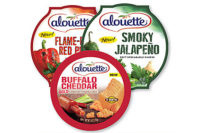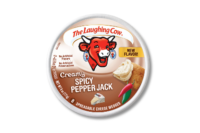Consumers, especially the millennial generation, are eating cheese more than ever.
Cheese consumption continues to rise in the United States with the most recent data showing that on average, each American consumes a little over 35 pounds of cheese each year – an all-time high, according to the U.S. Department of Agriculture. Over the past decade, per capita cheese consumption in the United States has risen by 11.7%.
Cheese as a snack
Rachel Kerr, public relations manager at the Wisconsin Milk Marketing Board, Madison, said that consumers continue to want healthy and convenient snacks. According to the WMMB, only about 14% of consumers eat just breakfast, lunch and dinner.
“Most of us – the remaining 86% – snack throughout the day, with close to half (46%) snacking three or more times each day. That’s up by five percentage points over the past year. Snacking has also increased throughout the day with considerable gains in late evening snacking,” said Kerr.
She added, “High-protein snacks like cheese are trending upward driven in large part by millennials and generation X. Millennials tend to snack to save time and often choose cheese because its protein content helps to keep them full between meals.”
According to Kerr, Wisconsin dairy companies are continuing to meet consumer demand for snacks with new dairy product launches that are convenient and high in protein. Some of the newest products include BelGioioso’s Fontina and mozzarella snacking cheeses; Schuman’s Cello Whisps (see page 72) and Ellsworth Cooperative Creamery’s Hot Buffalo Curds.
“Cheese is a fantastic source of flavor and a lot of people are looking to replace their heavily processed snacks. They’re turning to cheese as a craveable, filling substitute,” said llana Fischer, vice president, Innovation & Strategy at Schuman Cheese, Fairfield, N.J. “We’ve seen lots of cheeses packaged or prepared as snacks, ranging from our Cello Whisps, which are made from 100% cheese and baked into crisps, to snack-sized individual packaging like Cabot’s snack packs.”
Flavor exploration
Along with new snacking options and portion-controlled packaging, processors are innovating with unique flavors, like smoky or spicy. Consumers, especially millennials, are showing a lot more interest in exploring their palates.
“Hot and spicy flavors continue to dominate trend forecasts,” said Kerr. She noted these examples: Roth’s Sriracha Gouda, Pine River’s Ghost Pepper Sharp Cheddar Spread and Nasonville’s Carolina Reaper Cheddar (featuring the very hot Carolina Reaper peppers).
Kerr added, “In 2017, look for new globally inspired spice blends to join the mix including Latin American, Middle Eastern, Southeast Asian and Mediterranean. Wisconsin cheesemakers are already embracing this trend with the debut of new flavors like Sweet Fire Mango Jack and Citrus Ginger BellaVitano.”
Cabot Creamery, Waitsfield, Vt., dipped into interesting flavor profiles with new hand-rubbed and flavored cheeses, like Tuscan Cheddar, featuring bell pepper, fennel and onion flavors, and the spicy Hot Buffalo Wing Cheddar.
“While the four ingredients in cheese somehow result in infinite flavor profiles, cheesemakers have started to look beyond milk, salt, rennet and cultures for flavor,” said Fischer. “We’ve seen a large variety of flavored cheeses come to market this year. This is fun because these cheeses tend to be bright and interesting.”
Fischer said hot peppers, like ghost peppers, were showing up everywhere at the last Fancy Food show in San Francisco.
She added, “There are a lot of wonderful cheeses from around the world that are finally getting noticed in the U.S. market. These include quark, halloumi and labneh, to name a few. I would expect that we’ll see new flavors coming along with these cheeses like za’atar (a Middle Eastern spice blend) and olive.”
There also has been an increase in sales for cold-pack cheeses and flavored cheese spreads, according to the Wisconsin Milk Marketing Board. According to WMMB’s custom IRI database, volume sales of cold pack cheeses are up 1.5% over the latest 52 weeks. In dollar sales, growth for cheese spreads over the latest 52 weeks has increased 3% and dollar sales growth for cold pack cheese is up by 1.3%.
Most popular cheeses on the menu
According to Chicago-based Technomic’s MenuMonitor, the most popular cheese varieties appearing on U.S. restaurant menus currently are:
- Mozzarella
- Parmesan
- Cheddar
- Provolone
- Feta
- Fresh mozzarella
- Cream cheese
- Blue cheese
- Swiss cheese
- American cheese










